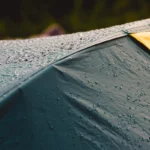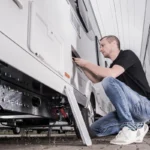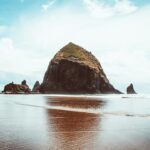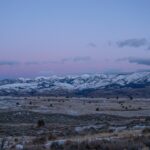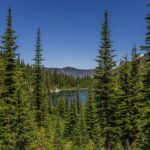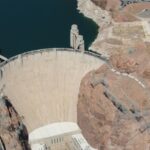Arizona is a state known for its diverse landscapes, making it a prime destination for overlanding enthusiasts. From desert trails to mountain passes, Arizona offers a wide range of terrain for those looking to explore off the beaten path. In this blog post, we will delve into the best overlanding routes, camping spots, and historical landmarks that Arizona has to offer.
Overlanding vs. Off-Roading: Understanding the Differences
Before we dive into the details of overlanding in Arizona, it’s important to understand the difference between overlanding and off-roading. While both activities involve driving off-road, there are distinct differences in their focus and purpose.
Overlanding is all about self-sufficiency and exploring remote areas for an extended period of time. It involves traveling long distances and often camping out in the wilderness. Overlanders typically carry all the necessary supplies and equipment with them, including food, water, and shelter. The goal is to be self-reliant and self-contained throughout the journey.
On the other hand, off-roading is more focused on the thrill of driving on challenging terrain. It often involves shorter trips and is more about pushing the limits of your vehicle’s capabilities. Off-roaders may tackle difficult obstacles or participate in organized events such as rock crawling or mud bogging.
While both activities can be enjoyed in Arizona, overlanding requires more planning and preparation than off-roading. Overlanders need to consider factors such as route planning, food and water storage, and vehicle modifications to ensure a successful trip.
Planning Your Arizona Overlanding Adventure: Tips and Tricks
When planning your overlanding adventure in Arizona, there are several key factors to consider. First and foremost, research the area you’ll be exploring and plan your route accordingly. Look for maps or guidebooks that highlight overlanding routes and points of interest.
Next, make sure you have enough food, water, and supplies for the duration of your trip. Arizona’s remote areas may not have easy access to amenities, so it’s important to be self-sufficient. Consider investing in a high-quality cooler or fridge to keep your food and drinks fresh.
Additionally, check the weather forecast and be prepared for extreme temperatures. Arizona can get scorching hot in the summer months, so plan your trip accordingly and pack appropriate clothing and sun protection. It’s also a good idea to have a backup plan in case of inclement weather.
The Best Overlanding Routes in Arizona: From Desert Trails to Mountain Passes
| Route Name | Difficulty Level | Distance (miles) | Estimated Time | Highlights |
|---|---|---|---|---|
| Apache Trail | Moderate | 40 | 4-6 hours | Scenic views of Superstition Mountains, Tonto National Forest, and Apache Lake |
| Box Canyon Road | Easy | 20 | 2-3 hours | Box Canyon, Gila River, and Sonoran Desert landscape |
| Crown King Trail | Difficult | 28 | 6-8 hours | Historic mining town, Bradshaw Mountains, and panoramic views |
| Cherry Creek Road | Moderate | 25 | 4-5 hours | Cherry Creek, Tonto National Forest, and wildlife sightings |
| Sheep Bridge Road | Easy | 14 | 2-3 hours | Verde River, Tonto National Forest, and historic Sheep Bridge |
Arizona offers a variety of overlanding routes that cater to different preferences and skill levels. One popular choice is the Arizona Backcountry Discovery Route (AZBDR), which spans over 750 miles from Mexico to Utah. This route takes you through some of the most scenic areas of the state, including the Sonoran Desert, Mogollon Rim, and the Grand Canyon.
Another iconic route is the Apache Trail, which offers stunning views of the Superstition Mountains. This historic trail winds through the Tonto National Forest and takes you past picturesque lakes, rugged canyons, and old mining towns. It’s a great option for those looking for a mix of off-roading and sightseeing.
For those seeking a more challenging adventure, the Coronado Trail is a must-try route. This 123-mile stretch of highway takes you through the heart of the Coronado National Forest and offers breathtaking views of the surrounding mountains. Be prepared for steep grades and tight switchbacks along this scenic route.
Exploring Arizona’s Wild West: Historical Landmarks and Natural Wonders
In addition to its stunning landscapes, Arizona is also rich in history and boasts several notable landmarks. One must-visit destination is Tombstone, known as “The Town Too Tough to Die.” This historic mining town is famous for the gunfight at the O.K. Corral, which took place in 1881. Visitors can explore the streets lined with old saloons, visit the Tombstone Courthouse State Historic Park, and even catch a reenactment of the famous gunfight.
No trip to Arizona would be complete without a visit to the Grand Canyon, one of the Seven Natural Wonders of the World. This awe-inspiring natural wonder stretches for 277 miles and offers breathtaking views from every angle. Whether you choose to hike down into the canyon or simply admire it from the rim, the Grand Canyon is a must-see destination for any overlander.
For those interested in ancient history, Montezuma Castle National Monument is worth a visit. This well-preserved cliff dwelling was built by the Sinagua people around 700 years ago and offers a glimpse into the lives of the Native Americans who once inhabited the area. Take a self-guided tour and marvel at the impressive architecture and intricate masonry.
Camping in Arizona: Finding the Best Spots for Overlanding

Camping is an integral part of overlanding, and Arizona offers plenty of options for those looking to spend a night under the stars. One popular choice is the dispersed camping areas in the Tonto National Forest. These areas allow for primitive camping and offer stunning views of the surrounding desert landscape. Be sure to follow Leave No Trace principles and pack out all your trash.
The Kaibab National Forest is another great option for camping near the Grand Canyon. With several campgrounds to choose from, you can find a spot that suits your needs, whether you prefer a developed campground with amenities or a more secluded spot in the backcountry.
For those looking for a unique camping experience, the Organ Pipe Cactus National Monument has several backcountry campsites available. Located on the border with Mexico, this remote desert park offers stunning views of the organ pipe cactus and is a great place to stargaze.
Preparing Your Vehicle for Overlanding in Arizona: Gear and Equipment Essentials
Before embarking on your overlanding adventure in Arizona, it’s important to ensure that your vehicle is in good condition and has the necessary modifications for off-road travel. Start by checking the basics, such as tire pressure, oil levels, and battery health. It’s also a good idea to have your vehicle inspected by a mechanic to catch any potential issues before they become a problem.
Depending on the terrain you’ll be tackling, you may need to make some modifications to your vehicle. This could include adding off-road tires, installing a lift kit for increased ground clearance, or upgrading your suspension for improved performance. Consider investing in skid plates to protect the undercarriage of your vehicle from rocks and other obstacles.
In terms of gear and equipment, a high-quality tent, sleeping bag, and cooking equipment are essential for a comfortable camping experience. Look for gear that is lightweight and compact, as space is often limited in an overlanding vehicle. Don’t forget to pack recovery gear, such as a winch and recovery straps, in case you get stuck in difficult terrain.
Safety Tips for Overlanding in Arizona: Dealing with Extreme Weather and Wildlife
When overlanding in Arizona, it’s important to prioritize safety and be prepared for potential hazards. One of the biggest challenges in Arizona is the extreme temperatures, especially in the summer months. Be sure to pack plenty of water and stay hydrated throughout your trip. It’s also a good idea to plan your activities for early morning or late afternoon when temperatures are cooler.
Arizona is home to a variety of wildlife, including snakes and scorpions. Be cautious when exploring the desert and always watch where you step or reach. If you encounter a snake or scorpion, give them plenty of space and do not attempt to handle them. It’s also a good idea to familiarize yourself with basic first aid techniques for snake bites and other common injuries.
Lastly, always let someone know your itinerary and expected return date. This is especially important when traveling in remote areas where cell phone service may be limited. Provide a trusted friend or family member with details of your trip, including your planned route and any emergency contacts.
Overlanding with Family and Friends: Creating Unforgettable Memories in Arizona
Overlanding is not only a great way to explore the outdoors but also an opportunity to bond with family and friends. When planning an overlanding trip with loved ones, it’s important to consider everyone’s interests and abilities. Plan activities that everyone will enjoy, such as hiking, fishing, or stargazing.
Take advantage of the natural beauty of Arizona by planning scenic drives or hikes that offer stunning views. Encourage everyone to disconnect from technology and embrace the simplicity of nature. This is a great opportunity to create lasting memories and strengthen relationships.
Don’t forget to capture the moments by taking plenty of photos. Whether it’s a breathtaking sunset over the desert or a group shot at a scenic overlook, these photos will serve as a reminder of the incredible adventure you shared together.
Why Arizona is the Ultimate Destination for Overlanding Enthusiasts
In conclusion, Arizona is the ultimate destination for overlanding enthusiasts due to its diverse landscapes, historical landmarks, and abundance of camping spots. Whether you’re a seasoned overlander or a beginner, Arizona has something for everyone.
With proper planning and preparation, overlanders can explore remote areas and create unforgettable memories. From the iconic Grand Canyon to the historic town of Tombstone, there are endless opportunities for adventure in Arizona.
So pack your bags, load up your vehicle, and get ready to embark on an epic overlanding journey through the beautiful state of Arizona. The open road awaits!
If you’re planning an overlanding adventure in Arizona, you’ll want to check out this article on “Exploring America’s Least Visited National Parks” from Overlanding America. It provides valuable insights and recommendations on lesser-known outdoor destinations that offer unique experiences away from the crowds. From hidden gems to off-the-beaten-path trails, this article will help you discover the beauty and serenity of Arizona’s national parks. So, grab your gear and get ready for an unforgettable overlanding journey in the stunning landscapes of Arizona. Read more
FAQs
What is overlanding?
Overlanding is a type of self-reliant travel where you use a vehicle to explore remote and off-road areas for an extended period of time.
What are the best places to go overlanding in Arizona?
Arizona has many great places for overlanding, including the Mogollon Rim, Sedona, the Grand Canyon, and the Apache Trail.
What kind of vehicle do I need for overlanding in Arizona?
You will need a vehicle that is capable of handling rough terrain and has four-wheel drive. A high clearance vehicle is also recommended.
Do I need any special permits to go overlanding in Arizona?
You may need permits for certain areas, such as national parks or wilderness areas. It is important to research the specific areas you plan to visit and obtain any necessary permits beforehand.
What should I bring with me on an overlanding trip in Arizona?
You should bring plenty of water, food, and supplies for camping. It is also important to have a first aid kit, navigation tools, and a communication device in case of emergencies.
What is the best time of year to go overlanding in Arizona?
The best time to go overlanding in Arizona is during the fall, winter, and spring months when the weather is cooler and more comfortable for outdoor activities.
What are some safety tips for overlanding in Arizona?
Some safety tips for overlanding in Arizona include staying on designated trails, carrying plenty of water and supplies, letting someone know your itinerary, and being aware of weather conditions and potential hazards.

